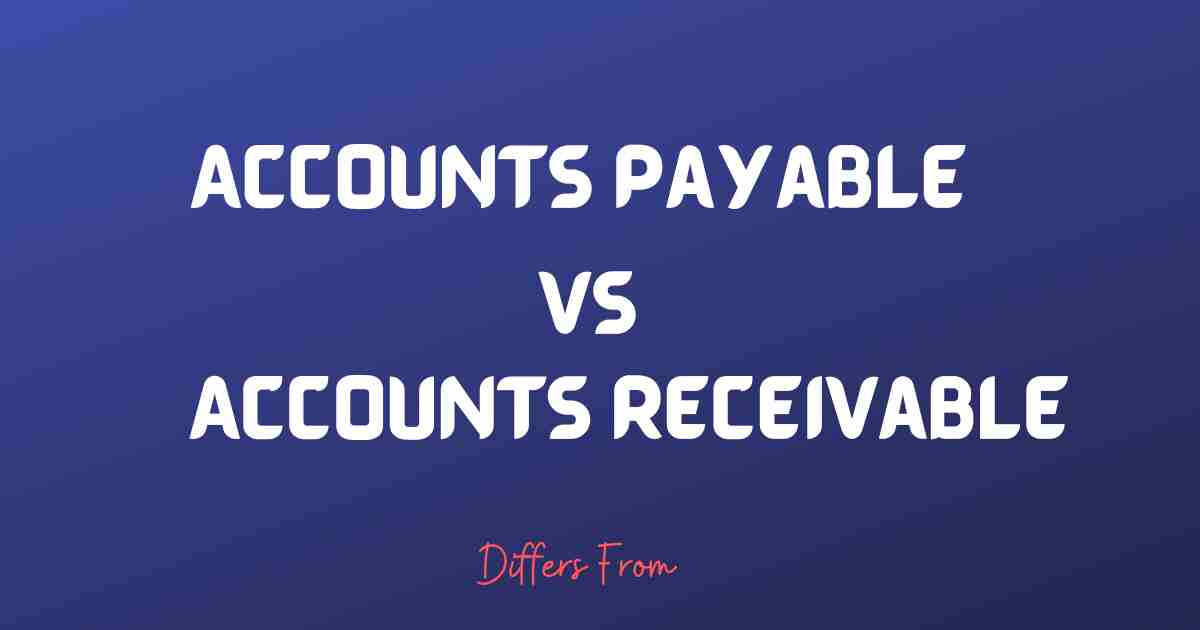Accounts payable and accounts receivable are two essential aspects of a business’s financial management. Knowing the difference between them is paramount for a company to make well-informed decisions and maintain its financial health.
Accounts payable refer to the money a company needs to pay out, while accounts receivable represent what is owed to the company. Properly managing both is necessary for a business to achieve a positive cash flow and secure a sound financial position. In this article, we will discuss the definitions, functions, and differences between accounts payable and accounts receivable so businesses can better manage their finances.
Definition of Accounts Payable
Accounts payable is a company’s financial obligation to pay for goods and services it has received on credit or settle short-term debts. This can include money owed to suppliers, creditors, or lenders.
Explanation of How Accounts Payable Works
When a business buys something on credit, it is responsible for repaying the supplier at a later date. The supplier usually provides an invoice with the due amount and payment date. The company will then record this amount in its accounts payable account. Once payment is made, the company reduces its accounts payable account and records the payment in its cash or bank account.
Examples of Transactions Resulting in Accounts Payable
Common examples of transactions leading to accounts payable are: purchasing goods or services on credit from a supplier; borrowing money from a lender or bank; receiving a loan from an investor or shareholder; renting equipment on credit; paying off a short-term debt such as an insurance premium or utility bill; and more.
Definition of Accounts Receivable
Accounts receivable is money owed to a company by its customers for goods or services that have been provided but not yet paid for. It is the amount of money due to the company from customers who have purchased goods or services on credit.
Explanation of How Accounts Receivable Works
When a company provides goods or services to a customer on credit, it records the amount due in its accounts receivable account. The customer will be sent an invoice specifying the amount due and when payment is due. After payment is made, the company reduces the amount in its accounts receivable account and records the payment in its cash or bank account.
Examples of Transactions That Result in Accounts Receivable
Common transactions that result in accounts receivable include providing goods or services on credit, selling goods or services with payment terms such as “net 30 days,” renting out equipment or machinery, providing services and billing afterward, and more.
Difference between Accounts payable and Accounts Receivable
| Accounts Payable | Accounts Receivable |
| Obligation to pay off a short-term debt or pay for goods and services received on credit | Money owed to a company by its customers for goods or services provided but not yet paid for |
| Recorded as a liability on a company’s balance sheet | Recorded as an asset on a company’s balance sheet |
| Represents the amount of money that a company owes to its creditors and must be paid in the near future | Represents the amount of money that is owed to the company and is expected to be received in the near future |
| Recorded and reported on a company’s balance sheet under the “current liabilities” section | Recorded and reported on a company’s balance sheet under the “current assets” section |
Accounts Payable Vs Accounts Receivable
Purpose: The main purpose of accounts payable is to track the money a company owes to its creditors, suppliers, or lenders. The main purpose of accounts receivable is to track the money that is owed to the company by its customers.
Relationship: Accounts payable represents a company’s obligation to pay off a debt or pay for goods and services received on credit. Accounts receivable represents the money that is owed to the company by its customers.
Recording and reporting: Accounts payable is recorded as a liability on a company’s balance sheet and is reported under the “current liabilities” section. Accounts receivable are recorded as assets on a company’s balance sheet and reported under the “current assets” section.
Impact on financial statements: Accounts payable can impact a company’s financial statements by increasing its liabilities and decreasing its net income. Accounts receivable can impact a company’s financial statements by increasing its assets and net income.
Management: Proper accounts payable management is important for a company to maintain a healthy cash flow and avoid late payment fees or damage to its credit rating. Proper accounts receivable management is important for a company to ensure timely payment from its customers and maintain a healthy cash flow.
How do they affect the financial statements of a business?
- On the balance sheet of a business, accounts payable are listed as a liability. It shows how much money the company owes to its creditors and will have to pay back soon.
- On the balance sheet of a business, accounts receivable are listed as an asset. It shows how much money is owed to the company and is expected to be paid back soon.
Explanation of how they affect a company’s financial statements:
- Accounts payable are usually listed in the “current liabilities” section of a company’s balance sheet.
- Accounts receivable are usually listed in the “current assets” section of a company’s balance sheet.
Even though accounts payable and accounts receivable are different types of accounts, they are closely related and can affect each other. For example, if a company has many accounts payable, it might not be able to pay its bills on time, which could cost it money or hurt its credit score. On the other hand, if a company has many accounts receivable, its customers may have trouble getting paid. This could hurt the company’s cash flow and financial health.

